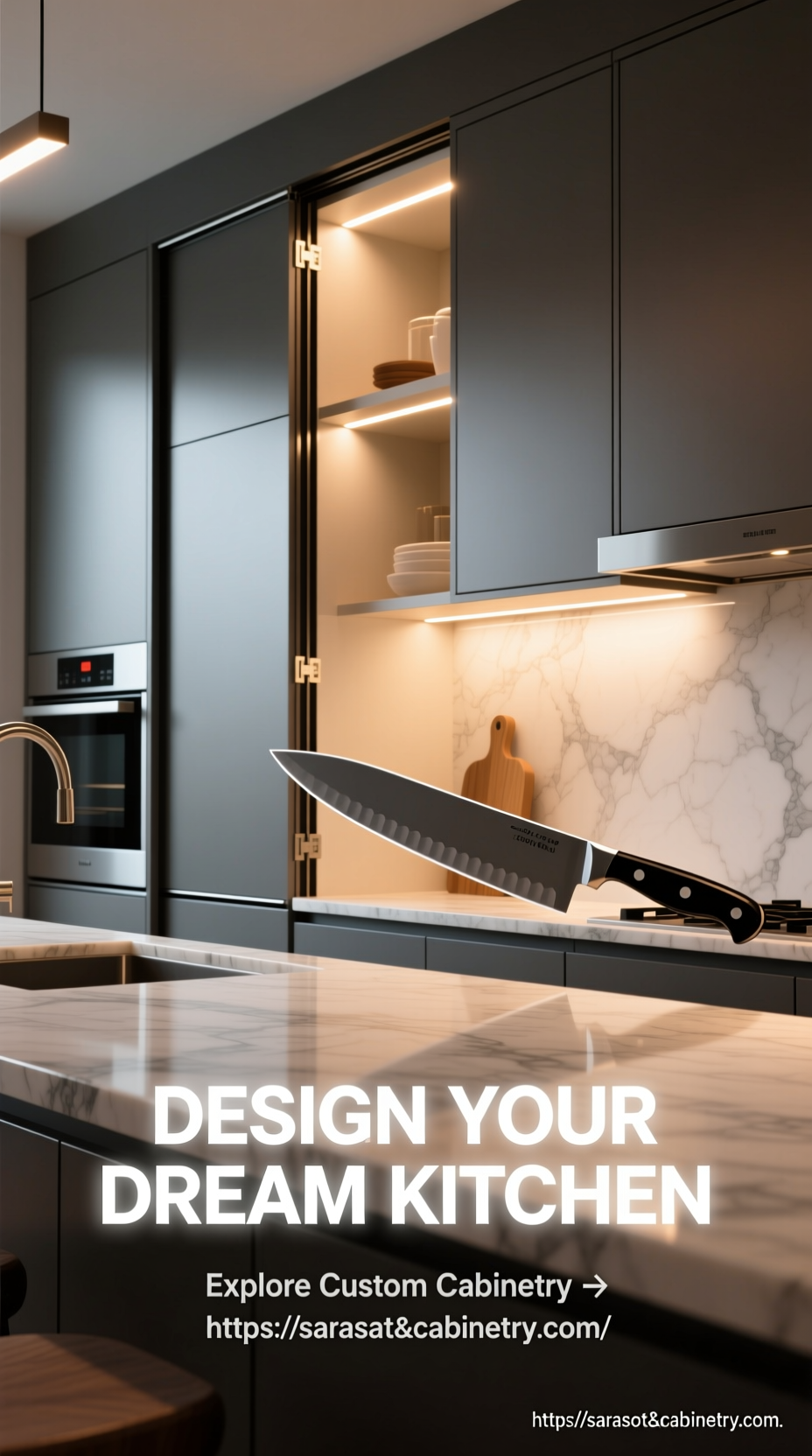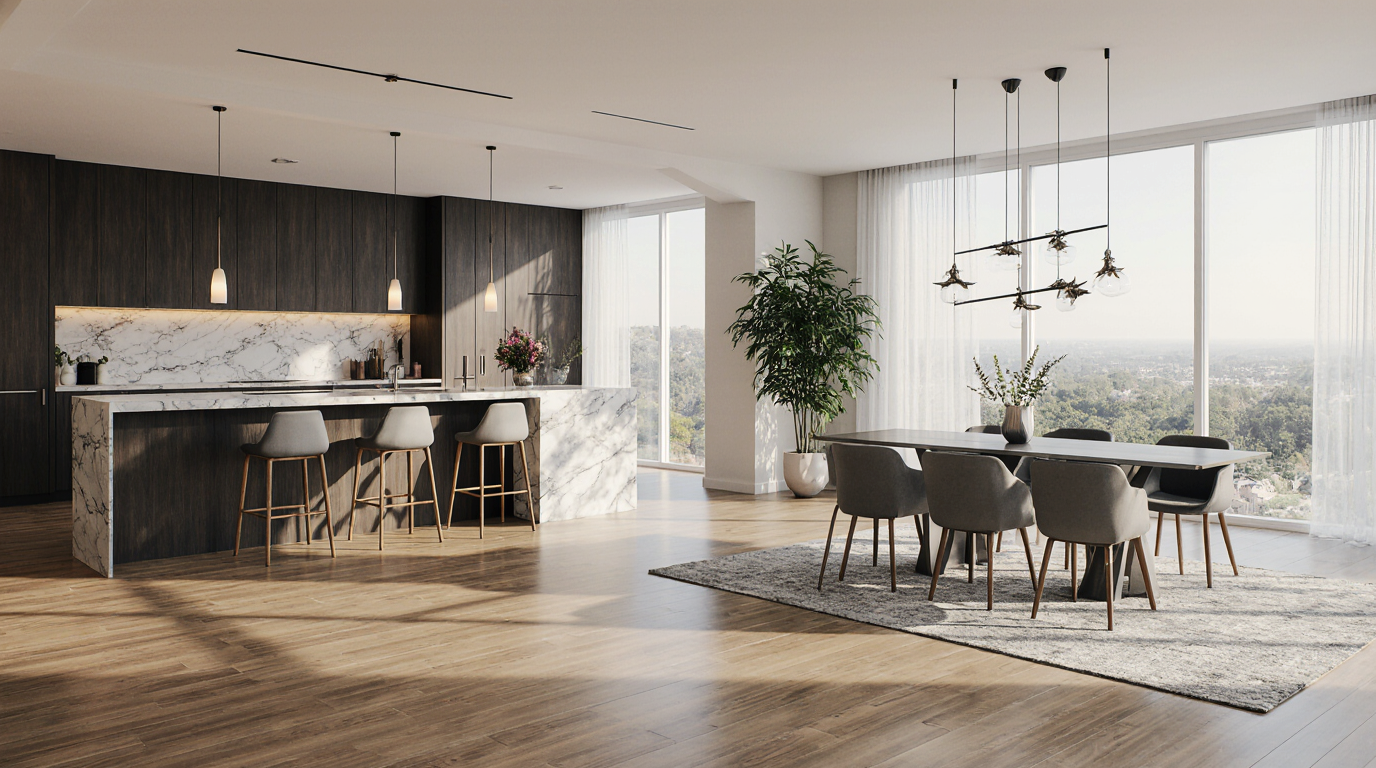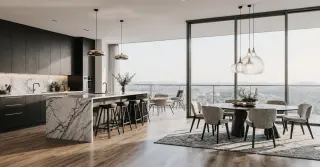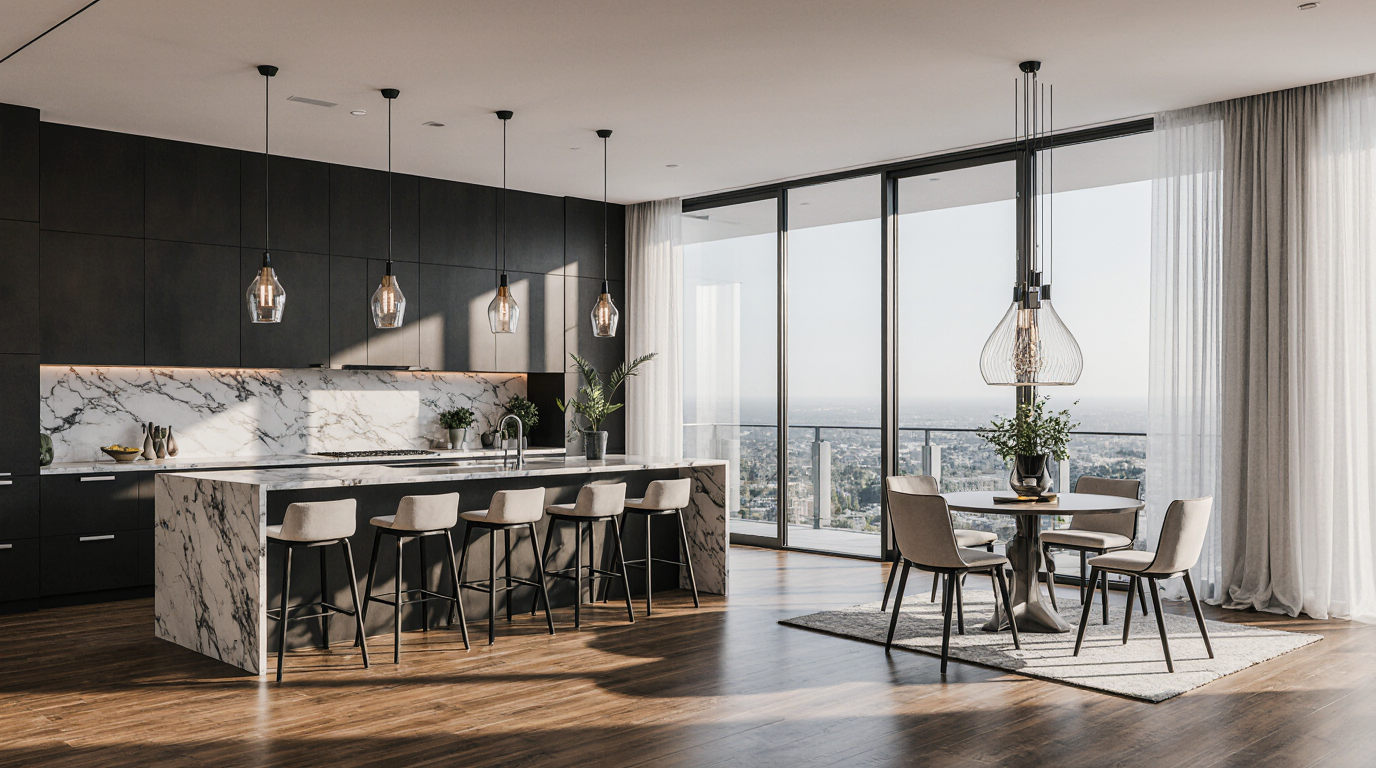Kitchen and Dining Room Design
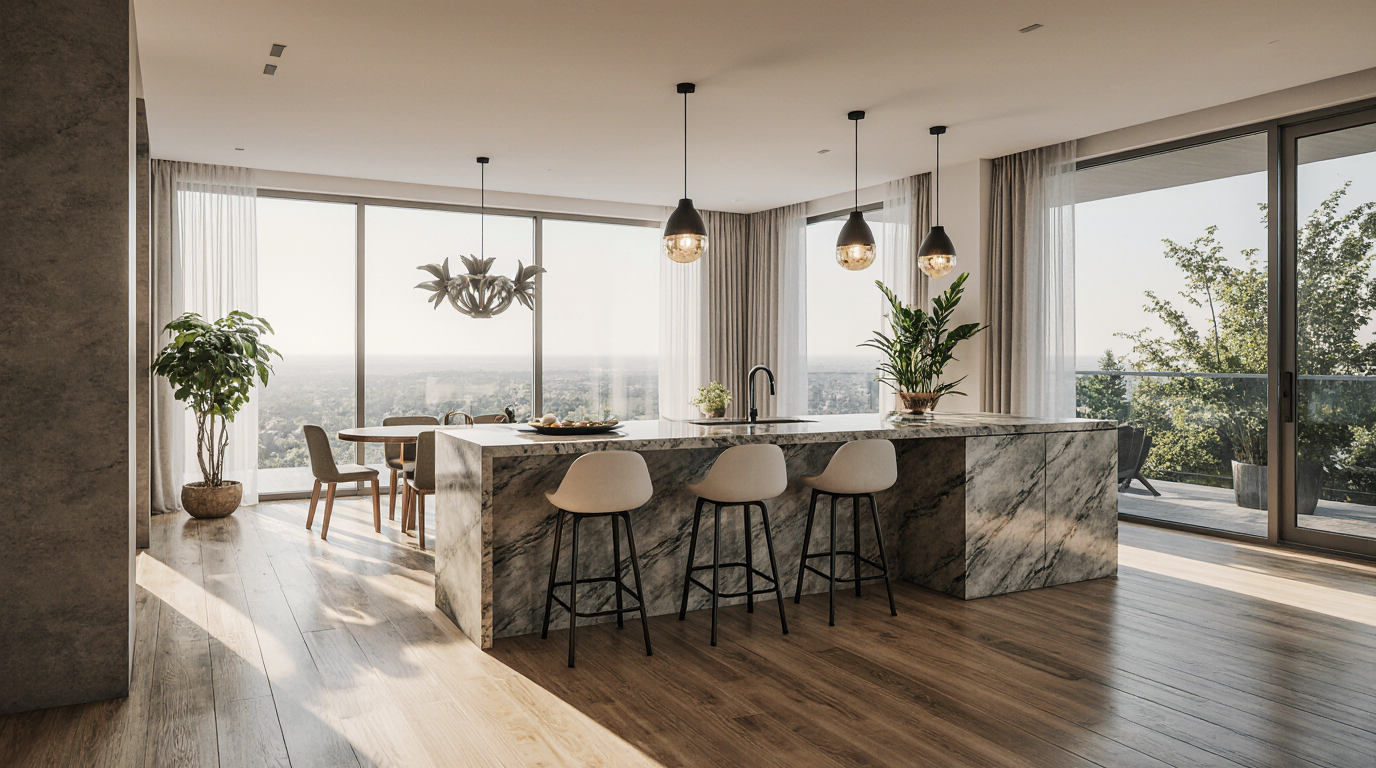
Kitchen and Dining Room Design: Transforming Modern Homes with Elegance and Functionality
Creating a remarkable kitchen and dining room design requires more than aesthetic appeal; it involves strategic planning, careful selection of materials, and a deep understanding of how a space interacts with daily life. A well-designed kitchen serves as the heart of the home, offering not only a functional cooking area but also a welcoming environment for family gatherings, entertaining friends, and enjoying quiet moments. Expert designers emphasize the importance of balancing practicality with luxury, ensuring that every cabinet, countertop, and appliance contributes to a seamless and enjoyable experience.
Modern kitchen design has evolved far beyond basic cabinetry and standard layouts; homeowners increasingly demand spaces that merge sophistication with cutting-edge functionality. Custom cabinets, crafted from premium materials such as walnut, oak, or maple, are central to this transformation. These high-quality kitchen cabinets not only provide ample storage but also elevate the overall elegance of the room. Features such as soft-close drawers, concealed shelving, and retractable storage optimize usability without disrupting sleek aesthetics. A thoughtfully designed kitchen layout enhances workflow, reducing the time spent navigating between the sink, stove, and refrigerator, and making everyday cooking more efficient.
Lighting plays a pivotal role in modern kitchen design, influencing both ambiance and functionality. Layered lighting, including recessed ceiling lights, pendant fixtures above islands, and under-cabinet LED strips, creates a versatile environment suitable for food preparation, casual dining, and evening gatherings. Beyond decorative appeal, lighting accentuates premium surfaces, artistic backsplashes, and tailored cabinetry detailing. Every lighting element is meticulously positioned by professionals to maximize brightness, ambiance, and visual coherence, reinforcing the kitchen’s role as a welcoming epicenter.
Adjacent or seamlessly blended dining zones require careful planning to ensure elegance and functionality match the kitchen’s sophistication. Dining spaces are curated to host both grand gatherings and cozy meals, blending ergonomic furniture choices, intelligent arrangement, and tasteful ornamentation. A solid hardwood dining table, paired with upholstered chairs, creates a luxurious yet inviting atmosphere. Prominent lighting fixtures—chandeliers, sculptural pendants—act as focal highlights, defining the space’s personality. Additionally, maintaining a cohesive color palette and material consistency between the kitchen and dining area ensures harmony throughout the space, making transitions seamless and visually appealing.
Innovative storage systems distinguish high-end kitchen and dining arrangements by combining accessibility with aesthetic grace. Tailored storage units, suspended shelving, and versatile islands provide organized efficiency while preserving visual clarity. Innovative storage options, such as concealed appliance garages, spice racks, and built-in wine coolers, allow homeowners to keep essentials within easy reach without compromising the sleek appearance of the kitchen. Harmonizing storage in open layouts is essential, preserving visual elegance while offering effortless access to culinary necessities. Designers recommend carefully balancing convenience and elegance, making sure every element is intuitively located and aesthetically aligned.
Choice of materials and finish details establishes both the functional quality and visual richness of the environment. Natural stone countertops like marble or granite exude sophistication, while quartz options provide durability and ease of maintenance. Premium wooden floors link areas harmoniously, adding tactile warmth and aesthetic depth. Designers may incorporate glass elements, such as cabinet doors or mirrored panels, to enhance light distribution and create a sense of spaciousness. Subtle metallic touches in fittings and lighting elements introduce refinement while reinforcing stylistic coherence. Selecting complementary materials ensures a cohesive environment that stands the test of time both visually and functionally.
Smart home and kitchen technology increasingly define modern culinary spaces. Connected devices—including intelligent ovens, camera-equipped fridges, and automated illumination—improve usability and impart futuristic elegance. Voice and touch-activated systems provide effortless operation, boosting both convenience and cleanliness. Experts advise integrating technology seamlessly with interior aesthetics, making sure functionality enhances rather than detracts from design. The seamless integration of technology also extends to dining areas, with adjustable lighting, climate control, and entertainment solutions enhancing comfort and ambiance during meals.
Color selection plays a strategic role in shaping the mood and character of a kitchen and dining area. Classic neutrals establish a versatile foundation, highlighting textures, finishes, and focal points. Bold hues, such as deep navy or forest green, can introduce dramatic flair and visual interest. Minor accents through materials, fabrics, or wall treatments give nuance and individuality without disturbing cohesion. Color strategy ensures visual serenity alongside dynamic expression, allowing kitchens and dining rooms to feel both sophisticated and approachable.
User comfort and operational efficiency define high-end kitchen and dining planning. Proper surface elevations, chair ergonomics, and traffic flow ensure convenience and prevent strain. Multi-purpose islands and elevated bars offer flexible zones for cooking, dining, and social interaction. In dining areas, chair dimensions, table height, and placement relative to lighting fixtures are meticulously planned to enhance comfort and visual balance. Ergonomic planning is interwoven with design intent, creating dining and kitchen areas that delight the eye while supporting daily activities.
Eco-conscious choices are vital in modern culinary and dining environments. Eco-friendly materials, energy-efficient appliances, and water-saving fixtures reflect a commitment to environmental responsibility without compromising style or luxury. Green materials such as salvaged hardwood, low-toxicity finishes, and recyclable surfaces achieve functionality, style, and environmental stewardship. Experts guide on efficiency measures, waste reduction, and durable, eco-conscious finishes to sustain design integrity. Sustainable and modern design principles converge to create kitchens and dining rooms that are both practical and ethically resonant.
Ultimately, an expertly designed kitchen and dining space embodies a seamless blend of style, practicality, and innovation. Each element—from cabinetry and countertops to lighting, seating, and storage—plays a role in establishing cohesion, comfort, and visual appeal. Whether for hosting, daily dining, or casual cooking, these areas mirror the resident’s preferences, habits, and aesthetic sensibility. Partnering with expert designers skilled in materials, workflow, and smart home integration enables the creation of kitchens and dining rooms that are elegant, efficient, and inspirational.

